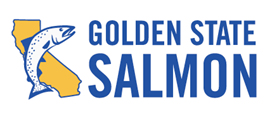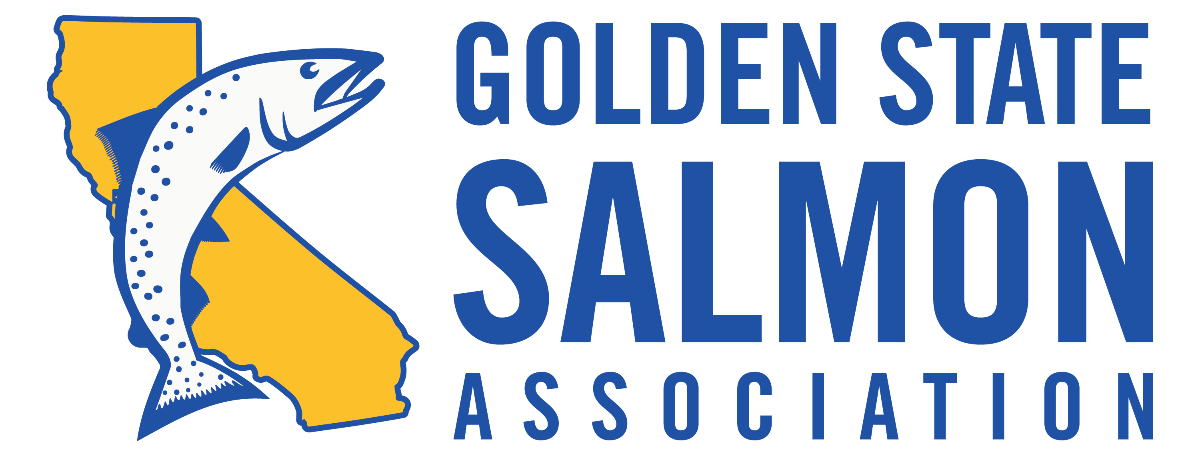Fish Report for 2-28-2023
Low 2023 Salmon Forecast Likely to Lead to Fishery Shutdown Predicted number lower than 2022 target

by John McManus
2-28-2023
Website
San Francisco -- Fishery managers, in a presentation given to the salmon industry in Oregon on February 27, estimate there are only 169,800 Sacrament Basin fall run salmon in the ocean now. This is likely too few to allow much, if any, fishing in 2023. The same information will be delivered to the California salmon industry on March 1.
Normally fishery managers allow fishing that will still deliver a minimum of 122,000 salmon to spawn in the Sacramento Basin. In recent years they’ve increased that target number. In 2022, fishery managers limited fishing in order to see more than 180,000 fall run salmon return to spawn but less than 62,000 showed up.
“I don’t think we’re going to see much if any salmon fishing this year,” said GSSA director Ned Brown. “This will hurt the tens of thousands of Californians whose jobs are tied to the salmon industry. It will also hurt every conservation-minded Californian who wants to see balanced management of the state’s natural resources, something Gavin Newsom has decided to abandon. If the untenable situation facing our salmon continues its current trajectory, salmon as a renewable, invaluable, and iconic wild resource in California could disappear in the near future. If there was ever a time for urgency, it is now.”
The decision about a 2023 salmon fishing season now goes to the Pacific Fisheries Management Council which will meet in March and early April. California Central Valley fall run salmon are also caught off the Oregon coast and fishery officials there told their salmon industry that ocean fishing in most of Oregon for king salmon is unlikely in 2023.
Since Gavin Newsom became governor, salmon numbers have declined while acreage planted in ultra-thirsty almond orchards has increased more than 300,000 acres. Newsom’s appointed State Water Board has also bottled-up rules adopted in December of 2018 requiring more flows in San Joaquin Valley rivers to improve salmon numbers.
“The bottom line is Gavin Newsom’s water policies have been a near carbon copy of the environmental destruction brought by the Trump administration,” said GSSA president John McManus. “We’re seeing it in this year’s forecast of a salmon run too small to support a fishery. This will hurt not only those who make a living tied to salmon but also the many Californians whose dinner tables would normally be supplemented by salmon, and that includes some households that are by no means wealthy.”
The low forecast number for 2023 comes two weeks after Gavin Newsom suspended salmon protections in the Delta in order to deliver more water to San Joaquin ag businesses. He did so against a backdrop of filling reservoirs, near record snowpack, and promises of 100 percent water deliveries to many of the biggest ag water districts.
“We desperately need some help from the federal government to step in and keep Gavin Newsom from destroying the state’s freshwater rivers and all who make a living tied to what was a sustainable salmon population here,” said GSSA director David Zeff. “Others have petitioned the US EPA to step in to save California’s rivers and freshwaters, something that Gavin Newsom’s administration is refusing to do. We hope EPA is listening.”
“We would have probably had a decent season this year if water management decisions made over the last few years by Newsom’s inner circle hadn’t created lethal conditions for the salmon we rely on to make a living,” said charter boat captain and GSSA director Jared Davis. “Over-diversion of the Central Valley rivers are what’s killing us. There’s a lot of fear across the salmon industry about how we’ll make a living in 2023.”
About GSSA: The Golden State Salmon Association (www.goldenstatesalmon.org) is a coalition of salmon advocates that includes commercial and recreational salmon fishermen and women, businesses, restaurants, a native tribe, environmentalists, elected officials, families and communities that rely on salmon. GSSA’s mission is to restore California salmon for their economic, recreational, commercial, environmental, cultural and health values.
Currently, California’s salmon industry is valued at $1.4 billion in economic activity and 23,000 jobs annually in a normal season and about half that much in economic activity and jobs again in Oregon. Industry workers benefiting from Central Valley salmon stretch from Santa Barbara to northern Oregon. This includes commercial fishermen and women, recreational fishermen and women (fresh and salt water), fish processors, marinas, coastal communities, equipment manufacturers, the hotel and food industry, tribes, and others.
GGSA president John McManus is a long-time salmon fisherman and salmon advocate. He comes from a varied background that includes ten years of commercial salmon fishing in southeast Alaska, 15 years producing news for CNN and more recently, 11 years doing publicity and organizing for the public interest environmental law firm Earthjustice. Work at Earthjustice included organizing and publicity supporting restored salmon fisheries in the Columbia, Klamath and Sacramento rivers.
A San Francisco native, Muni Pier and Lake Merced were the places where he first learned to tie a fishing line, bait a hook, and cast. He’s a long time member of the Coastside Fishing Club and keeps a boat part of the year in Half Moon Bay.
From the 1970s on he spent a lot of time in the north coast salmon communities of Bodega Bay, Pt. Arena, Fort Bragg and Eureka. As salmon runs declined in the 1990’s, he got a front row seat to the demise of these communities, something that fuels his advocacy for salmon and salmon communities to this day.
The Golden Gate Salmon Association is a coalition of salmon advocates that includes commercial and recreational salmon fisherman, businesses, restaurants, a native tribe, environmentalists, elected officials, families and communities that rely on salmon.
GGSA’s mission is to restore California salmon for their economic, recreational, commercial, environmental, cultural and health values.
Currently, California’s salmon industry is valued at $1.4 billion in economic activity annually in a regular season and about half that much in economic activity and jobs again in Oregon. The industry employs tens of thousands of people from Santa Barbara to northern Oregon. This is a huge economic bloc made up of commercial fishermen, recreational fishermen (fresh and salt water), fish processors, marinas, coastal communities, equipment manufacturers, the hotel and food industry, tribes, and the salmon fishing industry at large.
More Reports
The governor has taken direct aim at our salmon and we need to let him know he needs to change course

2-24-2023
Dear Salmon supporter, The governor has taken direct aim at our salmon and we need to let him know he needs...... Read More
Federal government announces 100% water deliveries to many ofits big ag water district contractors

2-22-2023
If you're covering news today of the federal Bureau of Reclamation announcing they'll deliver 100% water allocations to many of...... Read More

Website Hosting and Design provided by TECK.net